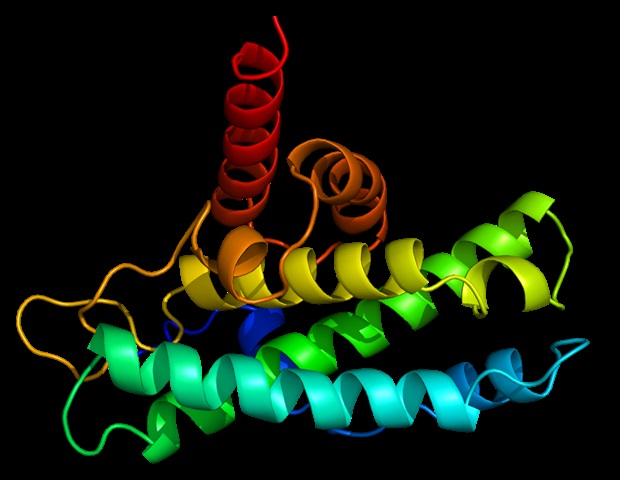Researchers from Tokyo Metropolitan University have uncovered new insights into how the proteins GRB2 and SOS1 in cells pass signals from membrane receptors to nuclei. They used nuclear magnetic resonance (NMR) to study how and which specific regions of GRB2 and SOS1 bind to each other, especially how they trigger liquid-liquid phase separation (LLPS). Issues with signal transduction are a major cause of cancers: understanding how it works may lead to radical new treatments.
Biological cells work through an intricate network of signal pathways, where reactions in specific parts of the cell lead sequentially to others through structural changes in proteins, a vast biomolecular relay where “batons” are passed on through a cascade of proteins binding and modifying each other. This “signal transduction” procedure is key to the healthy function of cells; mutations in the genes encoding for these signal-passing proteins account for many tumors and cancers. In the search for new treatments and prevention methods, scientists have focused their efforts on understanding how the relay works, and how the whole process is regulated.
A team of researchers led by Associate Professor Teppei Ikeya from Tokyo Metropolitan University have been studying the role played by GRB2 and SOS1, two proteins known to play an important role in passing information from certain membrane receptors to the RAS protein, itself a key player in getting signals to the cell nucleus, where DNA resides. This eventually leads to the cell being able to use the original signal to regulate the production of more proteins. However, the exact workings of this pathway are not fully understood. A big reason for this was the softness, or “floppiness,” of GRB2 and SOS1, making them difficult to study with tools like X-ray crystallography and cryo-transmission electron microscopy.
Now, the team have used nuclear magnetic resonance (NMR) techniques and cutting-edge statistical tools to uncover new details about how GRB2 and SOS1 take part in signal transduction. GRB2 is known to have three domains (NSH3, SH2, CSH3), where the two SH3 domains (NSH3, CSH3) bind to the SOS1 protein. While it was long believed that they both bound with the same strength to SOS1, the team found that NSH3 had ten to twenty times more affinity for SOS1 than CSH3. Not only that, they also discovered key differences in their dynamics; CSH3 exhibited free mobility independent of the other domains..
The picture this yielded was far more detailed than anything previously imagined for RAS signal transduction. It also tied into recent research which suggests that GRB2 and SOS1 take part in liquid-liquid phase separation (LLPS), where they form dense droplets in cells and regulate how strongly signals are passed to RAS. In the team’s new mechanism, the parts of SOS1 sticky to the SH3 domains would be able to bind multiple NSH3 domains due to their strong affinity, while the flexible CSH3 domain can attract other free SOS1 molecules. This leads to the GRB1 protein acting like a bridge, leading to large, flexible domains rich in GRB2 and SOS1. This is the first time a mechanism has been proposed for LLPS of GRB2 and SOS1.
This unprecedented level of detail provides new insights into how cell signaling works and may help us understand how pathologies take root when it does not function as it should. The team hopes their findings will inspire not only new research, but routes to new cancer treatments.
This work was supported by the Funding Program for Core Research for Evolutional Science and Technology (CREST JPMJCR13M3 and JPMJCR21E5) from the Japan Science and Technology Agency (JST), Grants-in-Aid for Scientific Research (JP15K06979, JP19H05645) and Scientific Research on Innovative Areas (JP15H01645, JP16H00847, JP17H05887, JP19H05773, JP26102538, JP25120003, JP16H00779 and JP21K06114) from the Japan Society for the Promotion of Science (JSPS), the Shimadzu Foundation, and the Precise Measurement Technology Promotion Foundation. The NMR experiments were performed using the NMR Platform supported by the Ministry of Education, Culture, Sports, Science and Technology (MEXT), Program Grant Number JPMXS0450100021.
Source:
Journal reference:
Tateno, K., et al. (2024). Different molecular recognition by three domains of the full-length GRB2 to SOS1 proline-rich motifs and EGFR phosphorylated sites. Chemical Science. doi.org/10.1039/d4sc02656j.
Source link : News-Medica

